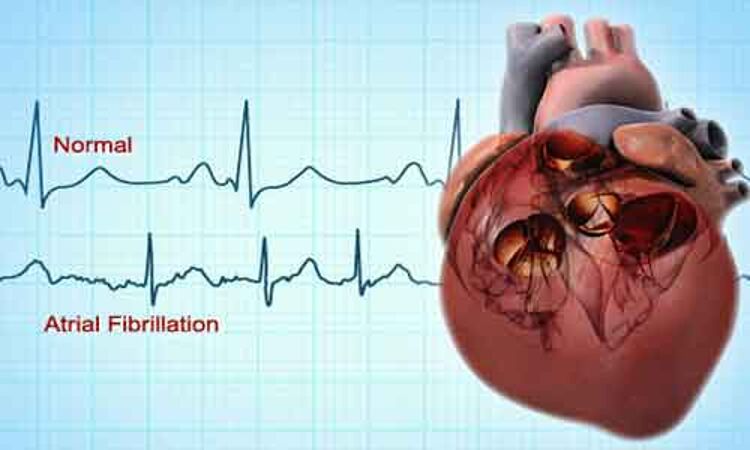- Home
- Medical news & Guidelines
- Anesthesiology
- Cardiology and CTVS
- Critical Care
- Dentistry
- Dermatology
- Diabetes and Endocrinology
- ENT
- Gastroenterology
- Medicine
- Nephrology
- Neurology
- Obstretics-Gynaecology
- Oncology
- Ophthalmology
- Orthopaedics
- Pediatrics-Neonatology
- Psychiatry
- Pulmonology
- Radiology
- Surgery
- Urology
- Laboratory Medicine
- Diet
- Nursing
- Paramedical
- Physiotherapy
- Health news
- Fact Check
- Bone Health Fact Check
- Brain Health Fact Check
- Cancer Related Fact Check
- Child Care Fact Check
- Dental and oral health fact check
- Diabetes and metabolic health fact check
- Diet and Nutrition Fact Check
- Eye and ENT Care Fact Check
- Fitness fact check
- Gut health fact check
- Heart health fact check
- Kidney health fact check
- Medical education fact check
- Men's health fact check
- Respiratory fact check
- Skin and hair care fact check
- Vaccine and Immunization fact check
- Women's health fact check
- AYUSH
- State News
- Andaman and Nicobar Islands
- Andhra Pradesh
- Arunachal Pradesh
- Assam
- Bihar
- Chandigarh
- Chattisgarh
- Dadra and Nagar Haveli
- Daman and Diu
- Delhi
- Goa
- Gujarat
- Haryana
- Himachal Pradesh
- Jammu & Kashmir
- Jharkhand
- Karnataka
- Kerala
- Ladakh
- Lakshadweep
- Madhya Pradesh
- Maharashtra
- Manipur
- Meghalaya
- Mizoram
- Nagaland
- Odisha
- Puducherry
- Punjab
- Rajasthan
- Sikkim
- Tamil Nadu
- Telangana
- Tripura
- Uttar Pradesh
- Uttrakhand
- West Bengal
- Medical Education
- Industry
Primary aldosteronism is highly prevalent in patients with atrial fibrillation: PAPPHY Study

Italy: Primary aldosteronism is highly prevalent in high BP patients with unexplained atrial fibrillation -- irregular heartbeat, a recent study in the Journal of Hypertension has suggested.
Findings from the PAPPHY study suggest that patients with no identifiable cause of the arrhythmia should be screened for primary aldosteronism to identify those who can be cured or markedly improved with target treatment.
Primary aldosteronism, also known as primary hyperaldosteronism or Conn's syndrome, is a hormonal disorder that leads to high blood pressure. It occurs due to the excess production of a hormone called aldosterone by the adrenal glands. Hyperaldosteronism patients are known to be prone to arrhythmias. Still, the relationship between atrial fibrillation and primary aldosteronism remains uncertain -- In the earlier Prevalence of Primary Aldosteronism in hYpertension (PAPY) study, patients with long-term aldosteronism had an AF risk that was significantly higher than in those whose primary aldosteronism was cured with adrenalectomy.
Gian Paolo Rossi of Padua University Hospital, in Italy, and colleagues tested the hypothesis that atrial fibrillation is a presentation of primary aldosteronism in hypertensive patients with unexplained atrial fibrillation.
The Prospective Appraisal on the Prevalence of Primary Aldosteronism in Hypertensive (PAPPHY) Study recruited 411 consecutive patients with atrial fibrillation and a clear diagnosis of arterial hypertension at three referral centers for hypertension. Among the 73 patients with hypertension and unexplained AF, 31 (42%) had a biochemical diagnosis of PA, and the remaining patients had primary (essential) hypertension.
Key findings of the study include:
· Fifteen of the patients with PA had aldosterone-producing adenomas. Thus, 20% of the patients included in the study had a surgically curable form and 22% had a nonsurgical form of primary aldosteronism.
· The rate of primary aldosteronism in this group is seven times higher than rates reported by general practitioners, four times higher than rates in patients referred to specialized hypertensive centers, and two- to three-fold higher than rates in patients with drug-resistant hypertension
· Primary aldosteronism patients had left atrial dilatation by echocardiography, but other echocardiographic measures did not differ significantly between the patients with primary aldosteronism and those with primary hypertension.
"PA is much more common than usually perceived, particularly in hypertensive patients with AF," concluded the authors. "It often eludes diagnosis because one of its classical signs, eg, hypokalemia, nowadays is absent in the majority of the patients."
The study, "Atrial fibrillation as presenting sign of primary aldosteronism," is published in the Journal of Hypertension.
DOI: 10.1097/HJH.0000000000002250
Dr Kamal Kant Kohli-MBBS, DTCD- a chest specialist with more than 30 years of practice and a flair for writing clinical articles, Dr Kamal Kant Kohli joined Medical Dialogues as a Chief Editor of Medical News. Besides writing articles, as an editor, he proofreads and verifies all the medical content published on Medical Dialogues including those coming from journals, studies,medical conferences,guidelines etc. Email: drkohli@medicaldialogues.in. Contact no. 011-43720751


